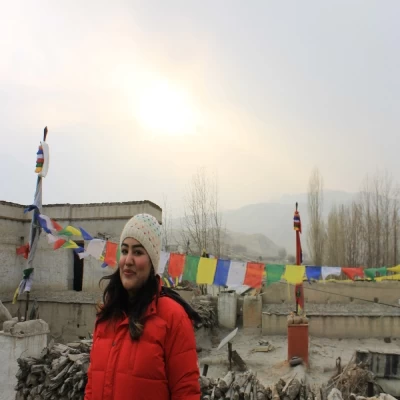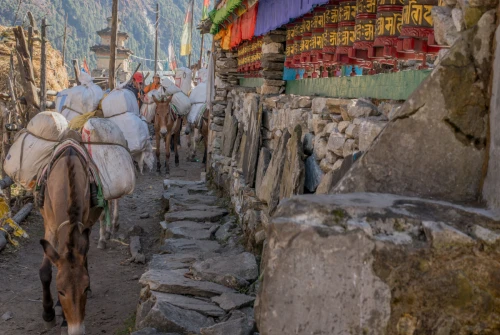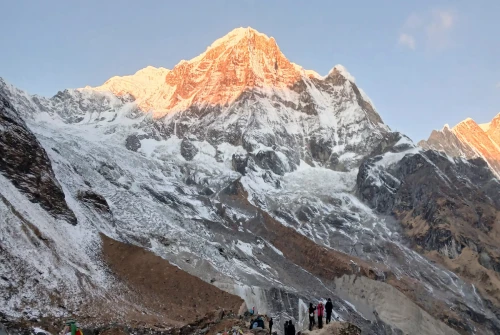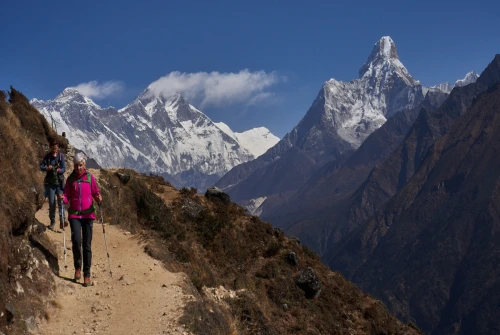Introduction
Dreaming of walking among giants like Mount Everest or wandering through the breathtaking Himalayas? Nepal offers a surreal high-altitude trekking experience that attracts adventurers from around the globe. But heading into thin air isn't just a walk in the park—you need the right prep to make it memorable for the right reasons. Let’s break down exactly how you can get ready to tackle the mountains of Nepal, whether you're eyeing Everest Base Camp or venturing into Manaslu.
Great! I’ll now explain each subtopic from the article “How to Prepare for High Altitude Trek in Nepal” in detailed paragraphs. Let’s dive deeper into each section so you can fully understand how to prepare yourself mentally, physically, and logistically for your trek in Nepal.
Understanding High Altitude
What is High Altitude?
High altitude starts at around 2,500 meters above sea level. Nepal’s Himalayan treks often go beyond 3,500 meters, where oxygen levels drop significantly. At this elevation, your body begins to experience physical stress due to less oxygen. “Very high altitude” ranges from 3,500m to 5,500m, where most of Nepal’s iconic treks fall. The air becomes thinner, and your lungs must work harder, even while resting.
Effects of Altitude on the Body
As you ascend, the oxygen available per breath decreases. Your heart and lungs work harder to supply oxygen to your body. This can lead to symptoms such as headaches, nausea, and dizziness—early signs of Acute Mountain Sickness (AMS). If not managed properly, it can worsen into HAPE (fluid in lungs) or HACE (swelling in the brain), which can be fatal.
Choose the Right Trek for Your Fitness Level
Popular High-Altitude Treks in Nepal
Everest Base Camp (EBC): It is one of the most popular treks globally. It reaches 5,364m, requiring 12–14 days to complete. The trail offers amazing views of Everest, Khumbu glacier, and vibrant Sherpa villages like Namche and Tengboche.
Annapurna Circuit: This trek loops around the Annapurna range and reaches Thorong La Pass at 5,416m. It takes around 15–20 days and showcases varied terrains subtropical forests, alpine meadows, and arid highlands.
Manaslu Circuit: This is a lesser-traveled trek reaching 5,160m at Larkya La Pass. It combines cultural immersion and dramatic landscapes with fewer crowds due to its restricted status.
Langtang Valley Trek: Ideal for beginners, this trek peaks at Tserko Ri (4,984m). It’s close to Kathmandu and offers beautiful scenery, glaciers, and Tamang culture.
Assessing Your Fitness
Choose a trek based on your stamina and experience. Beginners should start with Langtang or Poon Hill, while experienced trekkers can go for Manaslu or Everest Base Camp Trek. Don't let ambition override realism; overestimating your ability can be dangerous at high altitudes.
Physical Preparation
Start Training Early
Start your training at least 8 to 12 weeks before the trek. This allows your body to gradually build endurance and strength, reducing the risk of injuries and fatigue on the trail.- Cardio and Strength Workouts
Do aerobic exercises like jogging, cycling, stair climbing, and swimming to improve your cardiovascular health. Combine this with strength training focused on legs, back, and core to handle tough ascents and descents. Practice Hikes with Elevation
Hike on local trails with some elevation gain while carrying a loaded backpack. This simulates the trekking experience and conditions your muscles and joints.Flexibility and Endurance
Incorporate yoga or stretching to increase flexibility, which helps prevent stiffness and soreness. Long walks and moderate hiking 2–3 times a week also improve your endurance.
Mental Preparation
- Building Resilience
Trekking in the Himalayas isn’t a vacation—it’s an adventure that tests your limits. Be mentally prepared for fatigue, discomfort, and moments of doubt.
- Trekking in Solitude and Harsh Conditions
You may face long, silent walks, unpredictable weather, and a lack of luxuries. Accepting this challenge mentally helps you embrace the experience without being overwhelmed.
- Visualization and Mindset Training
Mentally walk yourself through the trek—imagine the early wake-ups, the cold mornings, the breathtaking peaks. Keeping your goal in mind keeps motivation high when things get tough.
Altitude Sickness and How to Prevent It
AMS, HAPE, and HACE
AMS (Acute Mountain Sickness) is common and usually mild if managed early.
HAPE (High-Altitude Pulmonary Edema) and HACE (High-Altitude Cerebral Edema) are serious and life-threatening, requiring immediate descent.
Signs and Symptoms
- Headache
- Insomnia
- Vomiting (in advanced stages)
- Loss of appetite
- Dizziness
Acclimatization Tips
Ascend slowly: No more than 500m in sleeping elevation per day
“Climb high, sleep low” rule
Take rest days every 3-4 days
Hydrate and eat well
Use of Diamox and Natural Remedies
Diamox (acetazolamide) can help prevent AMS, but it must be taken with a doctor’s advice. Garlic soup, ginger tea, and local herbal remedies are also commonly used by trekkers in Nepal.
Gear and Packing List
Clothing Layers
The weather varies from sunny days to freezing nights. Use a layering system:
Base: Thermal tops/bottoms
Mid: Fleece or insulated jacket
Outer: Waterproof shell or windbreaker
Footwear
High-ankle trekking boots with good grip are essential. Break them in before the trek to avoid blisters.
Other Essentials
Warm sleeping bag (rated for at least -10°C)
Backpack with chest/hip straps
Headlamp with extra batteries
Toiletries, sunscreen, and lip balm
First aid kit with personal meds
Nutrition and Hydration
Eat Enough Calories
Your body burns extra calories at high altitudes. Dal bhat, pasta, potatoes, and pancakes are high-energy foods commonly available in teahouses.
Importance of Staying Hydrated
Dehydration increases the risk of altitude sickness. Drink at least 3–4 liters daily, even if you don’t feel thirsty.
Snacks for Energy
Carry trail mix, protein bars, chocolate, or energy gels to snack on during long walks.
Get the Right Permits
TIMS Card
This is mandatory for most treks and helps the government track trekkers for safety.
National Park/Conservation Area Permits
Each region (like Annapurna, Langtang, or Sagarmatha) requires specific permits, which help fund conservation efforts.
Restricted Area Permits
Areas like Manaslu, Upper Mustang, and Nar Phu require special permits and a licensed guide.
Hire a Guide or Porter
Benefits of Local Guides
They know the trail, manage logistics, help with language barriers, and enhance your understanding of the local culture.
Supporting Local Economy
Hiring locals puts money directly into remote Himalayan communities.
Safety and Comfort
Porters lighten your load, making high-altitude walking much easier and reducing physical strain.
Weather Considerations
Best Trekking Seasons
- Spring (March–May): Blooming rhododendrons and clear skies
- Autumn (Sept–Nov): Crisp weather, perfect visibility
Be Prepared for Sudden Weather Changes
Always carry a raincoat or poncho. The weather can shift from sunshine to snow in a few hours at altitude.
Insurance and Emergency Plans
Trekking Insurance
Getting insurance is very important before you start your trek. You can check Best Travel Insurance for Trekking in Nepal for detailed information. Make sure your insurance covers:
- High-altitude trekking (up to 6,000m)
- Helicopter evacuation (can cost thousands without insurance)
Emergency Contacts
Register at checkpoints along the trail. Keep your emergency numbers handy and update someone back home regularly.
Altitude-Friendly Itinerary Planning
Slow Ascent is Key
Avoid skipping rest days. Follow a gradual itinerary with sufficient days for acclimatization.
Rest Days Should Be Active
On acclimatization days, do short hikes to slightly higher elevations and come back down to sleep.
Connectivity and Communication
Mobile Networks
Popular trails like Everest and Annapurna have Ncell or NTC coverage in many places.
Buy a Local SIM
For around NPR 200–300, you can stay connected affordably. Data packs are useful for navigation and updates.
Useful Apps
- Maps.me for offline maps
- Windy or Yr.no for weather
- WhatsApp/Viber for calls/messages
Cultural Sensitivity and Responsible Trekking
Respect Local Traditions
Remove shoes before entering homes or temples. Avoid public displays of affection. Learn basic Nepali greetings—“Namaste” goes a long way!
Eco-Friendly Habits
Carry reusable bottles
Avoid plastic bags
Don’t leave trash on trails
Leave No Trace
Stick to designated trails, respect wildlife, and leave nature the way you found it.
Conclusion
Trekking at high altitudes in Nepal is one of the most rewarding adventures you’ll ever experience—but it’s not something to take lightly. From physical training and proper gear to mental readiness and cultural respect, every step of your preparation matters. The Himalayas are majestic, but they demand respect. Being well-prepared not only ensures your safety and comfort but also deepens your appreciation of Nepal’s natural beauty and cultural richness. So, lace up your boots, start your training, learn about the altitude, and take this journey with a spirit of adventure and mindfulness. The mountains are calling—will you be ready to answer?




